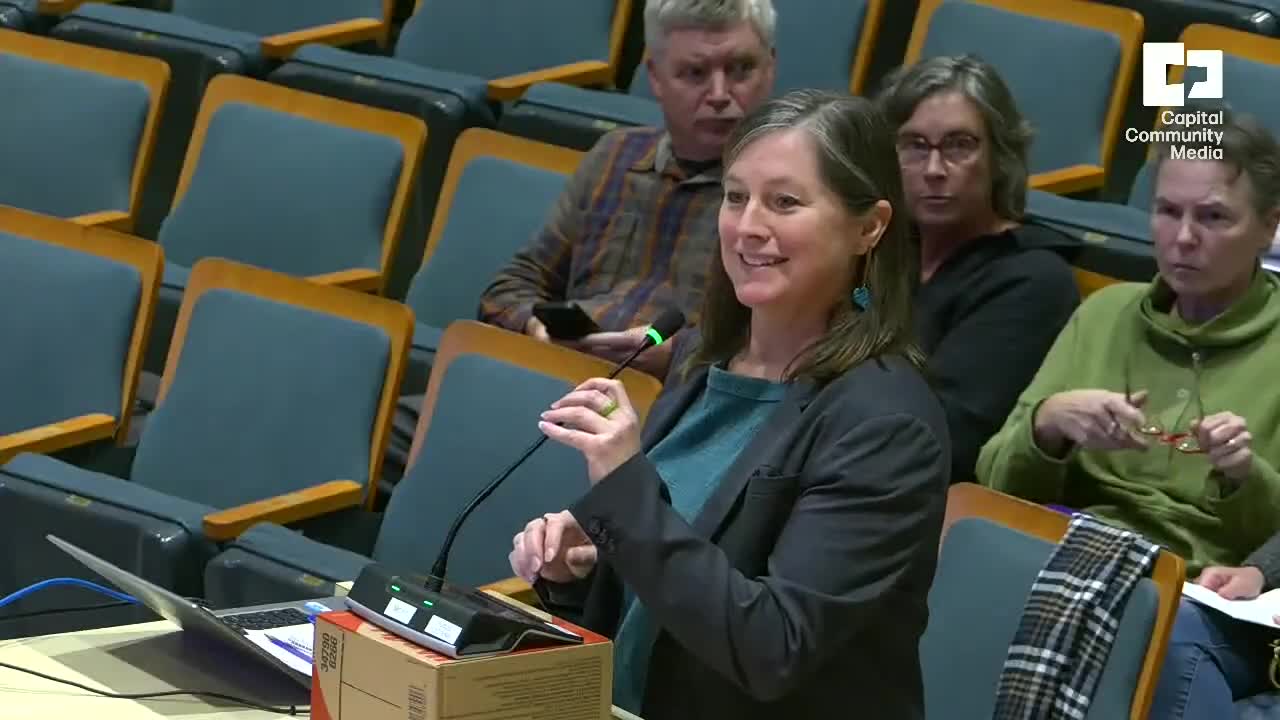DHM Research finds homelessness and safety top concerns; Salem satisfaction edges up from 2022
October 14, 2025 | Salem , Marion County, Oregon
This article was created by AI summarizing key points discussed. AI makes mistakes, so for full details and context, please refer to the video of the full meeting. Please report any errors so we can fix them. Report an error »

DHM Research presented results of a September 2025 community satisfaction survey to the Salem City Council on Oct. 13, reporting trends in residents’ views of city services, safety and downtown conditions.
John Horvick, senior vice president at DHM Research, told councilors the survey of 400 residents used phone and text outreach, has a margin of error of about 4.9 percent and included English and Spanish respondents. Courtney Knox Bush, the city's chief strategy officer, said staff would use the data to inform the city’s strategic‑plan update next month.
Key findings presented by DHM Research:
- The single most frequently cited problem facing Salem was homelessness (43 percent), down from the mid‑50s percentage points in earlier surveys.
- Overall satisfaction with city services was 68 percent, an increase from the last measurement in 2022 but still below pre‑2020 levels.
- When asked about the value of city services for taxes and fees paid, 38 percent were satisfied and 57 percent were not satisfied.
- Downtown safety: 69 percent of respondents felt safe downtown during the day; 33 percent said they felt safe downtown at night. Women were more likely than men to report feeling unsafe downtown at night.
- Visit frequency: 86 percent said they had visited downtown at least once in the previous month.
Horvick emphasized that the survey shows both areas of concern and recent improvements. "This is a survey research project," he said, summarizing the methodology and the value of consistent tracking over time. City staff and councilors discussed how to use the results to measure the effectiveness of proposed safety and livability interventions.
Staff next steps: Courtney Knox Bush said the survey will inform an update to the city’s strategic plan and provide baseline data for planned safety and livability actions. DHM staff said additional cross‑tabulations are available on request to help the city examine differences by neighborhood, age, income and other demographics.
Ending: Councilors asked for follow‑up analyses on specific items — for example, whether social‑media users who engage with city content found city communications easier to follow — and staff said they will pull those cross‑tabs.
John Horvick, senior vice president at DHM Research, told councilors the survey of 400 residents used phone and text outreach, has a margin of error of about 4.9 percent and included English and Spanish respondents. Courtney Knox Bush, the city's chief strategy officer, said staff would use the data to inform the city’s strategic‑plan update next month.
Key findings presented by DHM Research:
- The single most frequently cited problem facing Salem was homelessness (43 percent), down from the mid‑50s percentage points in earlier surveys.
- Overall satisfaction with city services was 68 percent, an increase from the last measurement in 2022 but still below pre‑2020 levels.
- When asked about the value of city services for taxes and fees paid, 38 percent were satisfied and 57 percent were not satisfied.
- Downtown safety: 69 percent of respondents felt safe downtown during the day; 33 percent said they felt safe downtown at night. Women were more likely than men to report feeling unsafe downtown at night.
- Visit frequency: 86 percent said they had visited downtown at least once in the previous month.
Horvick emphasized that the survey shows both areas of concern and recent improvements. "This is a survey research project," he said, summarizing the methodology and the value of consistent tracking over time. City staff and councilors discussed how to use the results to measure the effectiveness of proposed safety and livability interventions.
Staff next steps: Courtney Knox Bush said the survey will inform an update to the city’s strategic plan and provide baseline data for planned safety and livability actions. DHM staff said additional cross‑tabulations are available on request to help the city examine differences by neighborhood, age, income and other demographics.
Ending: Councilors asked for follow‑up analyses on specific items — for example, whether social‑media users who engage with city content found city communications easier to follow — and staff said they will pull those cross‑tabs.
View full meeting
This article is based on a recent meeting—watch the full video and explore the complete transcript for deeper insights into the discussion.
View full meeting
